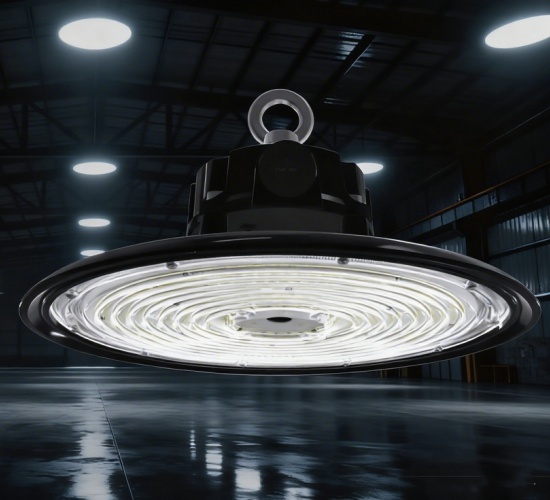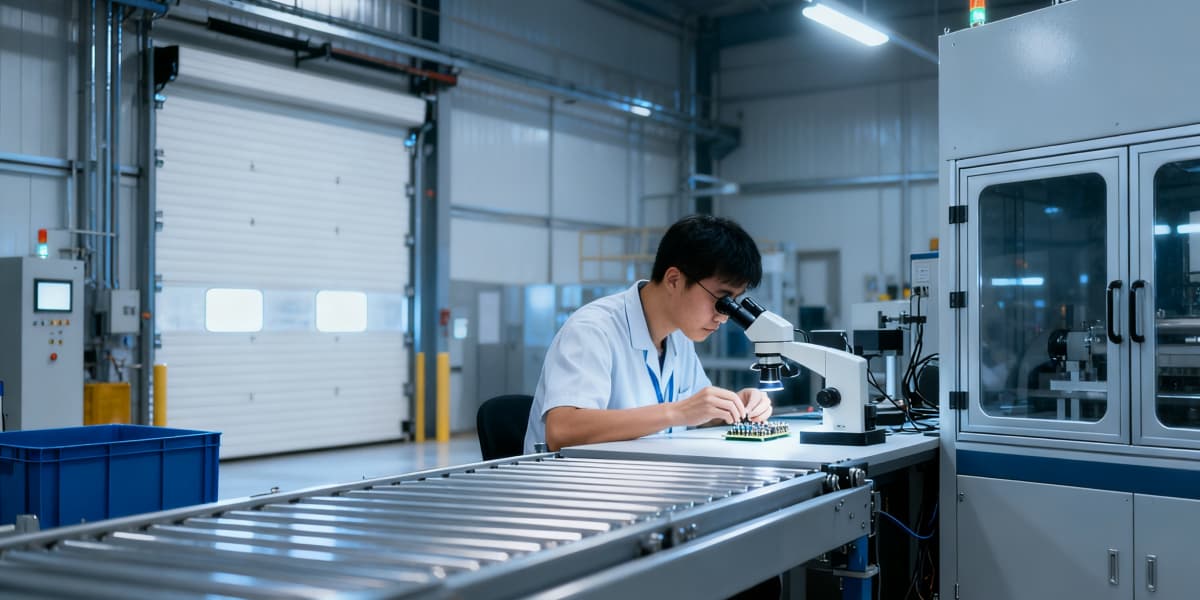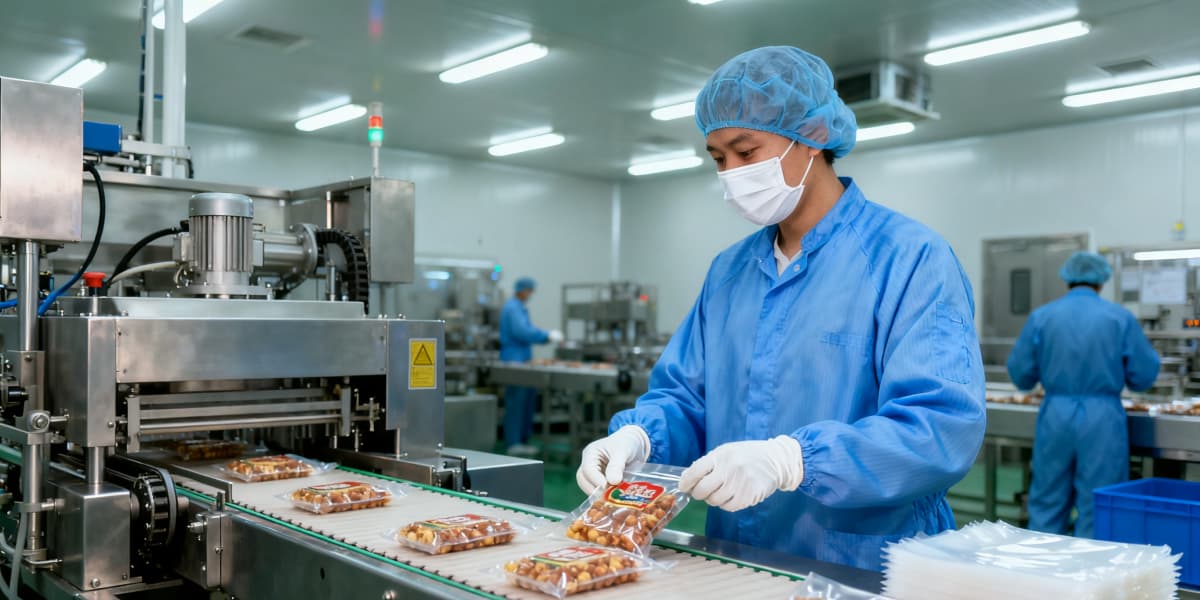LED工厂照明灯:工业工作场所照明指南

目录:
LED 工厂照明灯是现代工业照明的支柱——为生产设施、仓库和车间提供强大的亮度、较长的使用寿命和显著的节能效果。
与传统的金属卤化物灯或荧光灯相比,LED照明确保了更安全、更高效、更环保的运行。
在本指南中,我们将探讨如何选择合适的 LED 工厂照明灯,了解其技术规格,并了解为什么改用 LED 对任何工业场所来说都是一项明智的投资。
1. 引言——为什么工厂照明很重要
工厂照明不仅仅是简单的亮度调节——它是工业环境中安全、精准和高效生产的基石。
大型设施通常不间断运转,包含高耸的建筑、复杂的装置和重型设备。这类场所需要稳定、强劲的照明,以支持精准作业并维持安全的环境。
这就是LED工厂照明灯的 优势所在。与传统的HID灯或荧光灯相比,LED灯亮度更高,能耗却显著降低。它们能产生均匀的光线,防止闪烁,发热量极低——而且使用寿命比老式系统长达五倍。
对于工厂管理者而言,这意味着更低的电力成本、更少的维护停机时间以及生产车间更清晰的整体照明。
随着可持续性和性能日益受到重视,基于 LED 的解决方案现在已成为现代制造工厂的首选。
无论是升级现有设备还是规划新的安装,选择合适的 LED 工厂照明灯都有助于创造更安全、更节能、更经济的工业环境。
2. 工厂环境中照明面临的主要挑战
工厂环境对照明系统提出了极其严苛的要求。高高的天花板、宽敞的生产区域、灰尘、潮湿和高温都会影响照明性能和安全性。许多工厂还实行24小时不间断运转,这意味着灯具必须能够长时间稳定运行,且不易发生故障。
传统金属卤化物灯或荧光灯在这种环境下往往表现不佳——启动缓慢、亮度随时间衰减,且需要频繁更换。这些缺点不仅增加了维护成本,也增加了工作场所能见度差和事故发生的风险。
相比之下,LED工厂照明灯 专为应对这些严苛环境而设计。它们提供稳定、无闪烁的照明,保持色彩一致性,即使在高温或多尘环境下也能高效运行。凭借IP65+防护等级和先进的散热技术,LED灯的耐用性是传统灯具无法比拟的。
以下简要对比即可说明二者的区别:
特征 | 金属卤化物/荧光 | LED工厂灯 |
启动时间 | 慢速(2-5分钟) | 即时开启 |
能源效率 | 60–80 流明/瓦 | 120–150 流明/瓦 |
寿命 | 约10,000小时 | 50,000–100,000 小时 |
维护 | 频繁更换灯泡和镇流器 | 最低限度的维护 |
热输出 | 高的 | 低的 |
亮度衰减 | 一年后才显现出来 | 多年来保持稳定 |
这就是为什么大多数现代工厂都在转向全LED照明系统——它们不仅可以提高可见度和安全性,还可以长期节省能源和维护成本。
接下来,让我们仔细看看真正高质量的LED原厂灯应该具备哪些 特征,以及在购买前应该关注哪些功能。
3.好的LED工厂照明需要具备哪些条件?
对于工厂用高棚LED照明灯而言,性能和可靠性至关重要。一款设计精良的LED工厂照明灯不仅要能均匀照亮大面积空间,还要能承受高温、灰尘和潮湿等恶劣的工作环境。
以下是定义高质量工厂照明系统的关键技术特点。
(1) 高发光效率(≥130 lm/W)
能源效率直接影响长期运营成本。最好的工厂LED照明灯具每瓦至少能提供130流明的光通量,将更多能量转化为可见光而非热量。这种高能效意味着更明亮的照明和更低的电费——对于全天候运转的大型工厂而言,这是一项至关重要的优势。
(2) 高显色指数(CRI≥80)
更高的显色指数(CRI) 可确保工人能够准确地辨别颜色和细节,这对于装配、检验和质量控制区域尤为重要。显色性差会导致视觉疲劳,并随着时间的推移造成生产错误。为了获得最佳的清晰度和舒适度,请选择显色指数 (CRI) 为 80 或以上的工厂 LED 照明灯具。
(3) IP65+防护等级和耐用性
工业环境通常包含灰尘、潮湿和高温。最低防护等级 为IP65 ,而IP67 或 IP69K 则可确保其能够抵御水柱喷射和腐蚀。坚固耐用的外壳,并具备IK08 抗冲击等级 ,还能有效防止意外碰撞或振动。
(4) 防眩光和广角光束设计
Proper beam distribution improves visibility and reduces glare, which is vital for worker comfort and safety. For factory ceilings between 6–15 meters, choose adjustable beam angles (60°, 90°, or 120°) to balance brightness and coverage. Anti-glare lenses or diffusers can further enhance visual comfort.
(5) Long Lifespan and Stable Output
Longevity defines the total value of an LED system. Top-tier industrial LED lights typically last over 50,000 hours, but premium-grade models can reach 100,000 hours (L80B10). This dramatically reduces replacement frequency, labor costs, and downtime.
(6) Example: Ceramiclite HB01 High Bay LED Light
For instance, Ceramiclite’s HB01 LED High Bay Light is engineered specifically for large-scale factories and warehouses. It combines top-tier optical performance with industrial-grade durability:

Luminous Efficacy: 160 lm/W (±5%)
Input Power: 60W / 80W / 100W
Input Voltage: 90–240Vac
Color Temperature: 3000K–6000K customizable
CRI: 70 / 80
Protection: IP67 / IP69K, IK08
Lifetime: 102,000 hours (L80B10@35℃)
Certifications: CE, RoHS, UL, ETL
Its flicker-free design, 0–10V dimming compatibility, and robust ceramic LED module make it a reliable solution for continuous industrial use. Built to endure the harshest factory conditions, HB01 demonstrates what high-performance LED factory lighting should deliver: efficiency, endurance, and precision.
4. How to Choose the Right LED Factory Lights?
Selecting the right LED lights for factory isn’t just about brightness — it’s about matching the lighting performance to your factory’s working conditions. Here are the key factors to consider before making a purchase.
Step 1: Match Brightness to Ceiling Height and Task Area
Every factory layout is different. Taller ceilings and wider areas require stronger lumen output and narrower beam angles.
6–8 m height: 60–80W fixtures with 120° beam angle
9–12 m height: 100–150W fixtures with 90° beam angle
13 m+ height: 200W+ fixtures with 60° beam angle
Ensure each work zone meets its illumination standard (usually 300–500 lux for assembly lines). Over-lighting wastes energy, while under-lighting can affect accuracy and safety.
Step 2: Check Environmental Resistance
Industrial LED light fixtures must survive tough conditions such as dust, moisture, heat, or vibration. Look for lights rated at least IP65, and ideally IP67 or IP69K for harsh environments like food processing or metal workshops.
If the area experiences strong vibrations or temperature fluctuations, choose fixtures with solid aluminum housing and anti-vibration mounting brackets.
Step 3: Prioritize Energy Efficiency and Safety Certifications
Efficiency and compliance go hand-in-hand. Always verify that the product meets UL, DLC, CE, or RoHS certifications.
These not only confirm safety and quality but may also qualify your project for energy rebates or government incentives. Opt for fixtures with Power Factor ≥ 0.9 and efficacy above 130 lm/W to ensure both performance and savings.
Step 4: Evaluate Warranty and After-Sales Support
Industrial lighting is a long-term investment. A reputable manufacturer should provide at least a 5–10 year warranty and professional technical support. Avoid low-cost, uncertified products that often fail early or lack replacement parts.
Check whether the supplier offers custom lighting design or on-site guidance for installation — this often reflects their reliability and commitment to customer satisfaction.
Step 5: Look for Smart Controls and Integration Options
Modern factories are adopting smart lighting systems that automatically adjust brightness based on occupancy or daylight. Choose fixtures compatible with:
0–10V / DALI dimming
Motion or daylight sensors
APP or centralized control systems
These intelligent functions reduce unnecessary power consumption and enhance worker comfort, especially in large-scale production areas.
Choosing the right LED factory lights ensures consistent brightness, lower operating costs, and safer working environments for years to come.
Ceramiclite provides professional-grade LED factory lighting with a 10-year warranty and full customization — designed to meet every industrial challenge with precision and reliability.
5. How to Plan Factory LED Lighting Layout?
A well-designed factory lighting layout ensures that every corner of the workspace is properly illuminated — improving visibility, productivity, and worker safety. Whether upgrading an old system or building from scratch, lighting design should be based on task requirements, ceiling height, and light distribution.

Electronic and Electrical Appliance Factories (AI-generated simulation image)
Step 1: Understand Illumination Standards
Before selecting or positioning fixtures, determine the proper brightness level (lux) for each area according to international standards such as EN12464-1 and OSHA guidelines:
Factory Area | Recommended Illuminance (Lux) | Description |
Assembly Line | 300–500 lux | Bright and uniform light for precision tasks |
Warehouse / Storage | 150–300 lux | Balanced brightness for navigation and safety |
Precision Inspection | 500–750 lux | High visibility for detailed work |
Packaging / Loading | 200–300 lux | Moderate lighting to reduce glare |
Aisles & Corridors | 100–200 lux | General visibility for movement |
Adequate lighting levels prevent eye strain and accidents while maintaining production accuracy.
Step 2: Calculate Mounting Height and Beam Angle
The mounting height directly affects how light spreads across the workspace:
6–8 meters: Use 120° beam angle for wide coverage.
9–12 meters: Use 90° beam angle to balance intensity and reach.
13+ meters: Use 60° beam angle to concentrate light on target areas.
A narrower beam concentrates light downward, ideal for tall ceilings, while a wider beam suits open-floor areas where even illumination is required.
Step 3: Optimize Fixture Spacing
To maintain uniformity, space fixtures evenly based on their beam angle and mounting height.
A practical rule of thumb is:
Spacing (S) ≈ 0.8 × Mounting Height (H)
For example, if fixtures are mounted at 10 meters, the ideal spacing between lights should be around 8 meters. This helps achieve balanced brightness without dark zones or excessive overlap.
Step 4: Consider Reflectance and Color Temperature
Reflective surfaces (white walls, bright flooring) increase light efficiency by up to 20%. Choosing the right color temperature (4000K–5000K) creates a neutral white tone that enhances visibility and alertness — ideal for production lines and assembly areas.
Step 5: Run Lighting Simulations or Pilot Tests
Before final installation, conduct a lighting simulation using software like DIALux or Relux. Simulations visualize how light spreads, identify potential shadow zones, and estimate total energy consumption.
Alternatively, install a sample fixture in each zone to compare brightness and coverage in real conditions before scaling up the design.
A well-planned factory lighting layout not only meets industry standards but also minimizes energy waste and maximizes visual comfort. By aligning fixture type, layout, and brightness with your factory’s workflow, you’ll achieve both safety and efficiency.
Next, we’ll look at real-world examples of how LED factory lights perform in different industrial environments.
6. Real-World Applications & Case Studies
Here are a few real-world examples that show how the right lighting design can dramatically improve productivity, safety, and energy efficiency.
Case 1: Automotive Manufacturing Plant – High Brightness & Uniform Coverage
In a car assembly workshop, workers perform detail-oriented tasks that demand excellent visibility. Ceramiclite’s HB01 high bay LED lights were installed at a height of 10 meters, delivering over 500 lux across the work area.
The result? A 45% energy reduction compared with the previous metal halide lamps, plus significantly better color accuracy for quality control. The uniform beam angles (90°/120°) helped eliminate shadows on assembly lines, improving workflow safety and precision.

Automotive Manufacturing Factories (AI-generated simulation image)
Case 2: Food Processing Factory – Hygienic, Moisture-Proof Design
A food packaging facility required lighting that could withstand frequent washdowns and meet hygiene standards. The IP69K protection of Ceramiclite HB01 made it an ideal fit — fully sealed against water, dust, and steam.
After upgrading from fluorescent fixtures, the factory achieved a 42% cut in power consumption and extended maintenance intervals from 6 months to over 5 years, thanks to the fixture’s 102,000-hour lifetime and anti-flicker technology compliant with ErP standards.
 Food Processing Factories (AI-generated simulation image)
Food Processing Factories (AI-generated simulation image)
Case 3: Logistics & Warehouse Center – Smart, Long-Hour Operation
In a 24/7 warehouse, energy management was key. The facility implemented HB01 lights with 0–10V dimming and motion sensors, automatically adjusting brightness based on occupancy and daylight. This system lowered operational costs by over 40% annually while maintaining consistent 300-lux illumination in key zones.
Key Takeaway
Across industries, Ceramiclite’s factory lighting solutions prove that well-designed LED systems can deliver measurable results — higher efficiency, lower costs, and safer working conditions.
Whether you run a precision assembly plant or a large warehouse, Ceramiclite helps you design, supply, and optimize the perfect LED lighting layout for your facility.
7. Conclusion
升级到LED工厂照明不仅仅是更换灯泡——它关乎工厂运作方式的彻底变革。高性能LED灯亮度强劲,节能高达60%,维护成本极低,并 通过无闪烁、防眩光照明提升安全性。
现代 LED 系统具备智能调光和传感器选项,能够适应实时需求,减少浪费,并优化每一瓦电力的使用。
Ceramiclite 的工厂照明解决方案 将工业级的耐用性与智能控制相结合,帮助制造商创造更清洁、更安全、更高效的生产环境。
了解 Ceramiclite 的工业照明解决方案如何帮助您打造更明亮、更安全、更高效的生产空间。
_thumb.jpg)